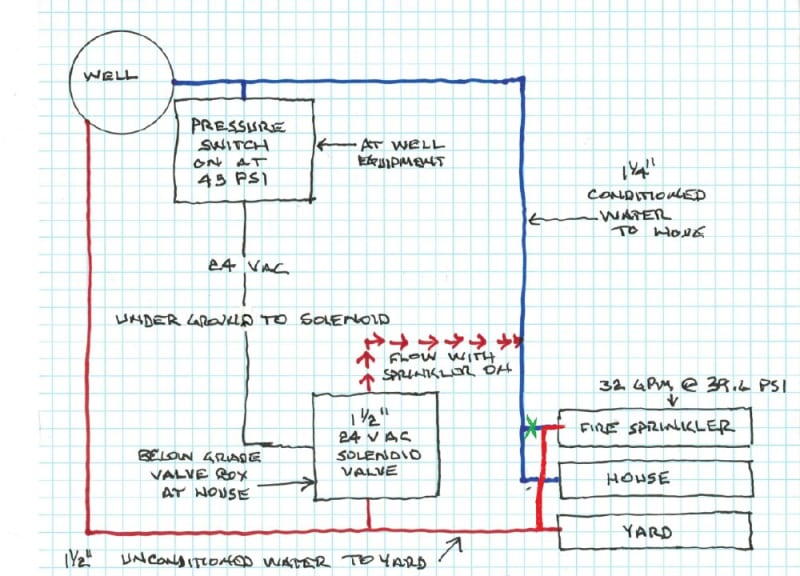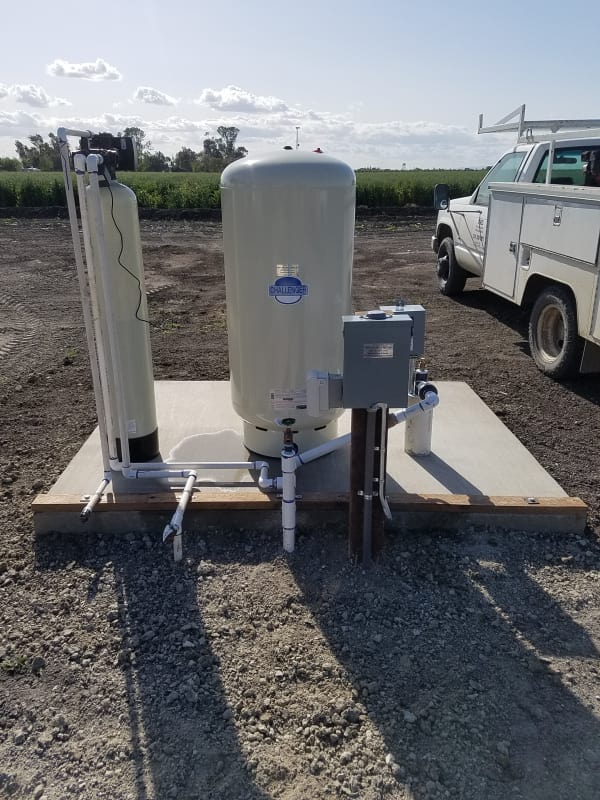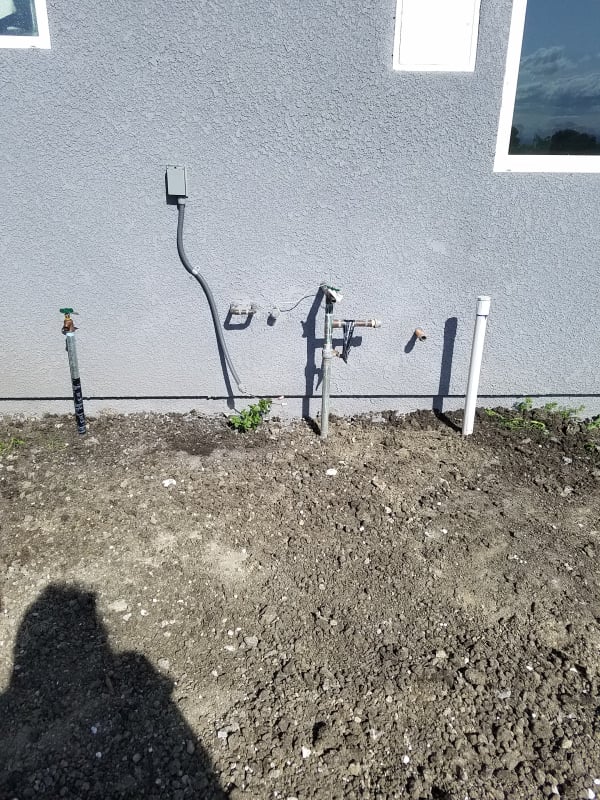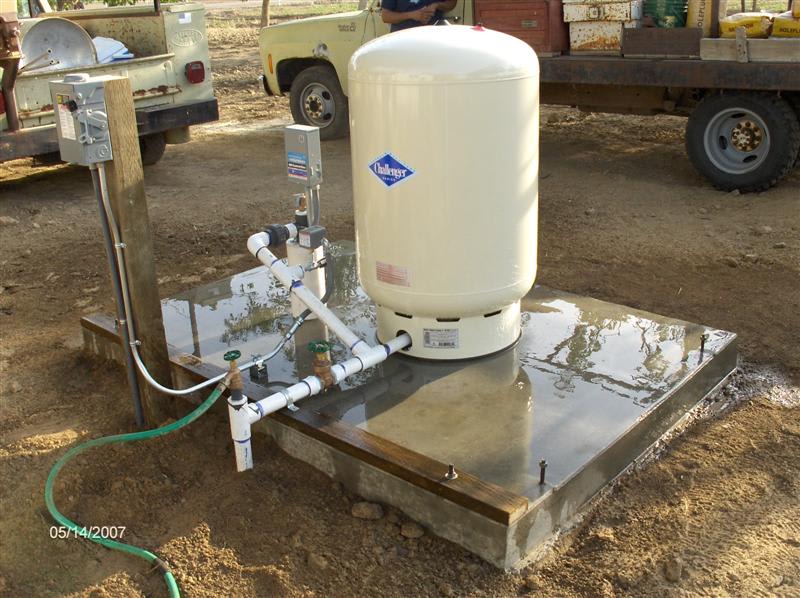dpwell
Civil/Environmental
- Apr 3, 2018
- 16
Hello,
I'm the well drilling, pump and water conditioning contractor for an under construction private residence. The water is going to require an iron removal system and softener. The fire sprinkler system connection is already installed in the interior of the house walls and is fed off the house water supply. The minimum fire sprinkler system requirement is 32 GPM @ 39.6 PSI. There is going to be too much pressure loss through the conditioning equipment to feed the fire sprinkler system. The general contractor and the fire sprinkler contractor are unwilling to separate the two and provide an exterior isolated connection for the fire sprinkler system.
I'm thinking there is likely some way to solve the problem with an isolating by-pass valve, probably about 1 1/2 inch in size. I would set the well pressure system to turn on at 50 PSI and shut off at 70 PSI. The pumping system will have plenty of capacity to feed the fire sprinkler system. I will run two lines to the house, a 1 1/4 inch conditioned water for inside and a 1 1/2 inch unconditioned for the yard. I will tie the two together and provide separation with a valve. The pilot for the valve will be connected to the house water side. If there is a 5 to 10 PSI differential on that side (should only happen in the event of the fire sprinkler system being activated) the valve will open sending unconditioned water to feed the fire sprinkler system. I talked to my valve guys at the agriculture side of Bermad and they either can't or don't want to help. Does anybody know how to set this up or can recommend a valve supplier? Attached is a sketch of my perceived layout.
Thank you for taking the time to look at this.
I'm the well drilling, pump and water conditioning contractor for an under construction private residence. The water is going to require an iron removal system and softener. The fire sprinkler system connection is already installed in the interior of the house walls and is fed off the house water supply. The minimum fire sprinkler system requirement is 32 GPM @ 39.6 PSI. There is going to be too much pressure loss through the conditioning equipment to feed the fire sprinkler system. The general contractor and the fire sprinkler contractor are unwilling to separate the two and provide an exterior isolated connection for the fire sprinkler system.
I'm thinking there is likely some way to solve the problem with an isolating by-pass valve, probably about 1 1/2 inch in size. I would set the well pressure system to turn on at 50 PSI and shut off at 70 PSI. The pumping system will have plenty of capacity to feed the fire sprinkler system. I will run two lines to the house, a 1 1/4 inch conditioned water for inside and a 1 1/2 inch unconditioned for the yard. I will tie the two together and provide separation with a valve. The pilot for the valve will be connected to the house water side. If there is a 5 to 10 PSI differential on that side (should only happen in the event of the fire sprinkler system being activated) the valve will open sending unconditioned water to feed the fire sprinkler system. I talked to my valve guys at the agriculture side of Bermad and they either can't or don't want to help. Does anybody know how to set this up or can recommend a valve supplier? Attached is a sketch of my perceived layout.
Thank you for taking the time to look at this.



![[dazed] [dazed] [dazed]](/data/assets/smilies/dazed.gif)
![[smile] [smile] [smile]](/data/assets/smilies/smile.gif)


